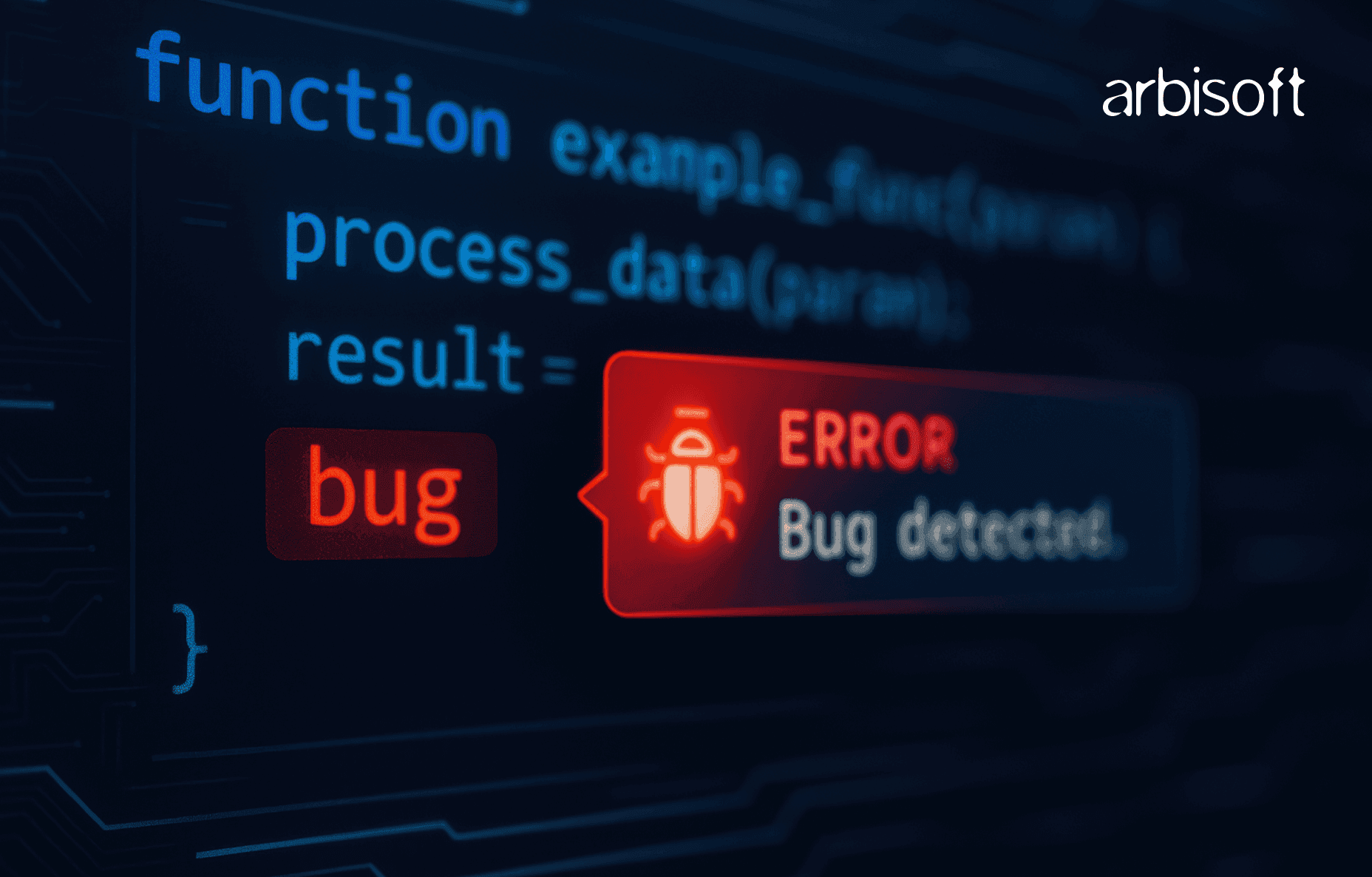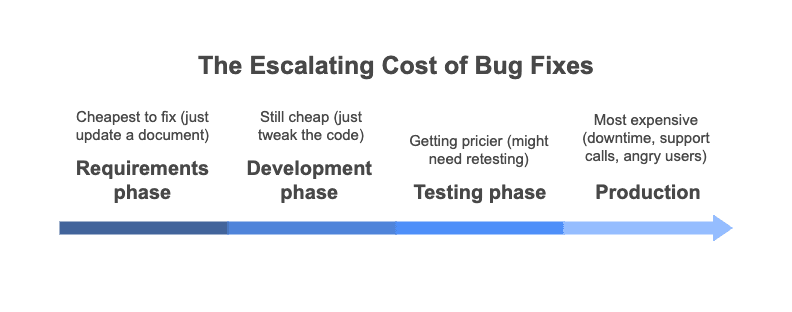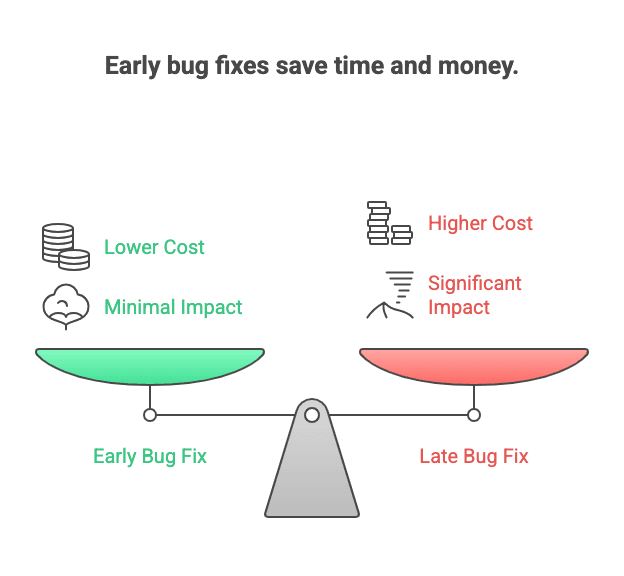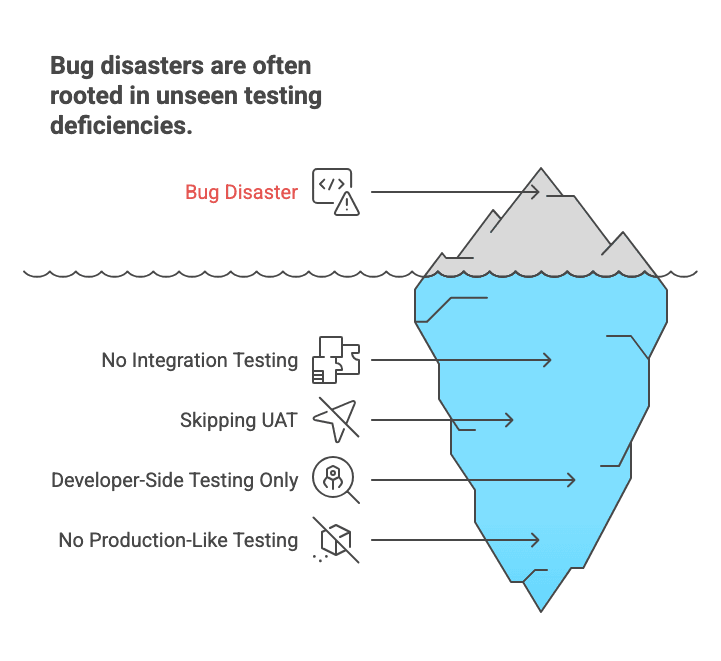We put excellence, value and quality above all - and it shows




A Technology Partnership That Goes Beyond Code

“Arbisoft has been my most trusted technology partner for now over 15 years. Arbisoft has very unique methods of recruiting and training, and the results demonstrate that. They have great teams, great positive attitudes and great communication.”
How Tiny Bugs Turn Into Million-Dollar Disasters — And What QA Can Learn From Them

Have you ever thought about how one small mistake in code could crash a whole spacecraft, put life at stake, or cost a company a million dollars in just a few minutes? Yes, you heard it right. When I started working as a QA, I used to think bugs were just annoying issues. But then I came across real stories where skipping or rushing testing caused serious damage, and it changed how I see things completely. I realized how sacred the role of QA is.
As QAs, we come across times when we feel like we are not valued enough. If you ever felt that way, then this blog is for you to make you feel proud and tell you how powerful QA is.
I am going to share real-world case studies where bugs caused real disasters and the lessons that we, as QA, can learn from them to become more responsible testers.
Real-World Bug Disasters
Case Study 1: The $125 Million Bug — NASA’s Mars Climate Orbiter
In 1999, NASA lost a $125 million spacecraft because one team used imperial units (pounds) while another used metric units (newtons). The mismatch was never caught in testing, and the orbiter entered Mars’ atmosphere and disintegrated.
Lesson for QA:
Never assume that different teams are on the same page. Always verify input formats and unit consistency, especially when multiple systems are involved.
Case Study 2: Therac-25 Radiation Machine — Deadly UI Errors
It happened between the years 1985 and 1987. There was a software bug in a radiation machine that gave patients massive overdoses. It resulted in the death of at least six patients.
The Therac-25 radiation machine was dual mode. It used software to change the mode instead of any hardware. The bug was the result of a race condition- a condition where the output is dependent on the timing of more than one computer operation running simultaneously.
The machine had two modes. If a tech quickly typed in a correction (like changing the mode), the software couldn't handle the change correctly. It kept the old mode in some parts of the system and used the new one in others. This mismatch caused the machine to give patients way too much radiation. The software wasn’t tested enough for fast typing or quick-change situations.
Lesson for QA:
Don’t just test features, but also test failures. It is important to test worst-case scenarios too. And never assume that if it hasn’t failed yet, it won’t.
Case Study 3: Amazon’s 1-Cent Pricing Glitch
The Amazon 1-Cent Pricing Glitch was in December 2014. It was caused by a third-party pricing software tool called RepricerExpress, which many sellers used to automatically adjust their prices to stay competitive. A bug in the tool appeared that reset the price of thousands of items to 1 cent, including the prices of high-value items like electronics, toys, books, and more.
Buyers snapped up items at these crazy prices. Some items were dispatched even before sellers could stop it. As a result, sellers lost thousands of pounds in minutes.
Lesson for QA:
Test pricing logic thoroughly. Testers should use boundary value analysis to check the minimum price limits to prevent disasters. The system should be tested under stress and sudden changes.
Bug Cost vs Time: Why Fixing Early Saves Millions
The longer you wait to fix one bug, the more expensive it gets.
Imagine a typo in your code. If you catch it during planning or early testing, it's just a quick fix. But if it slips into production? That same bug can crash systems, mess up customer data, or stop sales altogether. Suddenly, a 5-minute fix becomes a million-dollar problem.
Here's how the cost of a bug grows over time:

Catching a bug early is like fixing a leak before it floods your house. The sooner you find it, the less damage it causes and the more money (and stress) you save.

Lessons for QA from Real-World Disasters
Test Early, Test Often
Bugs are cheapest to fix when caught early. Delaying testing till the end invites risk; sometimes, the risk could be life-threatening.
Never Rely Solely on Automation
Automation is powerful, but it can miss unexpected behavior. Manual exploratory testing often catches issues that automation won’t, like confusing UI, poor error handling, or real-user edge cases.
Don't Assume "Small" Means Harmless
A 1-cent mistake bankrupted sellers on Amazon. Tiny bugs in pricing, dates, or logic can turn out into major financial or legal consequences.
Think Like a User, Not Just a Tester
Real users are unpredictable. They type fast, switch screens, make typos, or click buttons twice. Simulate how people use your app, not just how it’s supposed to be used.
Prioritize Accessibility and Edge Cases
Race conditions, accessibility bugs, and region-based issues often hide in edge cases. Don’t overlook them just because “most users won’t face this.”
Keep Learning from Others’ Mistakes
Failure case studies can be a treasure of wisdom for a QA. Read them, and apply the lessons before history repeats itself.

My Personal QA Experience: Catching a Bug Before It Exploded
During one of my QA projects, I was testing a new feature where users could apply a discount code during checkout. I decided to try a special character instead of entering valid inputs. I entered space as input for the discount code.
Surprisingly, the system accepted the code but didn’t apply any discount, and no error message showed up either. It was a small thing, but I reported it right away.
Turns out, this tiny issue would have affected thousands of users during a major sales campaign. Because we caught it early, the dev team was able to fix it quickly.
That day reminded me that it's not just about finding bugs, it’s important that when you find them.
And that’s where a curious QA mindset can shine.
Conclusion: Small Bugs, Big Impact
In QA, we’re not just verifying the requirements; we’re protecting real people, real money, and sometimes even saving lives.
From radiation overdoses to pricing meltdowns, history has shown us that even the smallest bugs can lead to huge consequences. However, with the right mindset, testing early, thinking like users, and paying attention to edge cases, we can prevent disasters before they happen.
Quality isn’t just about perfection. It’s about prevention.
And every time we catch a bug, we’re saving someone’s time, money, or safety, even if they never know it.
























